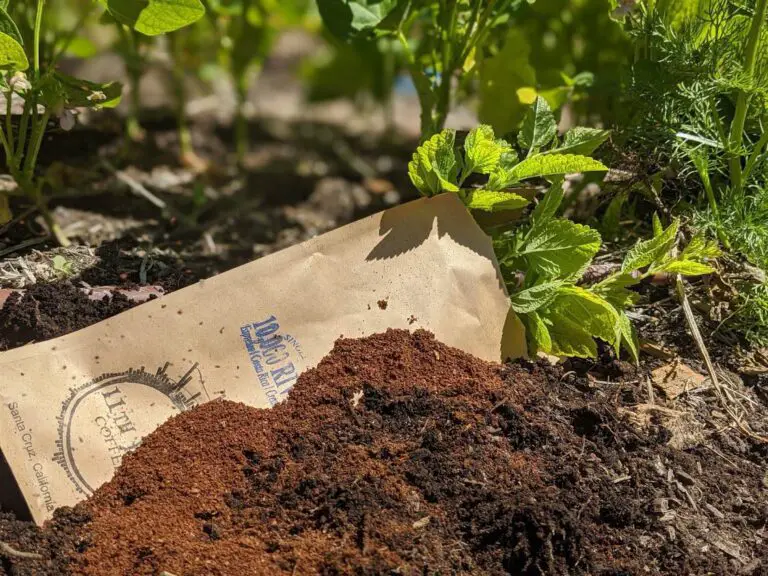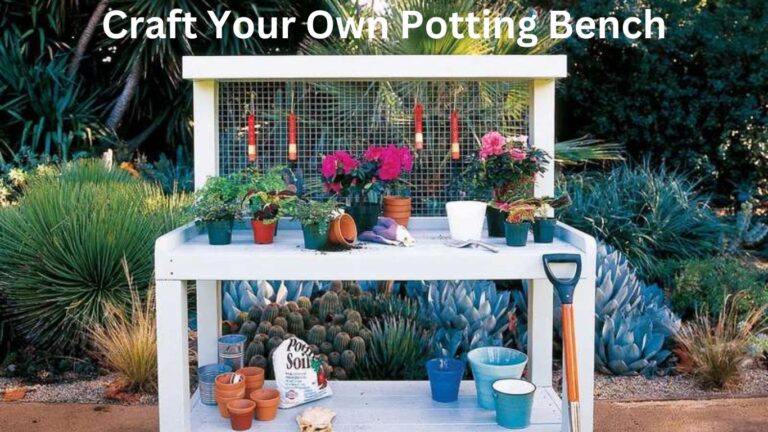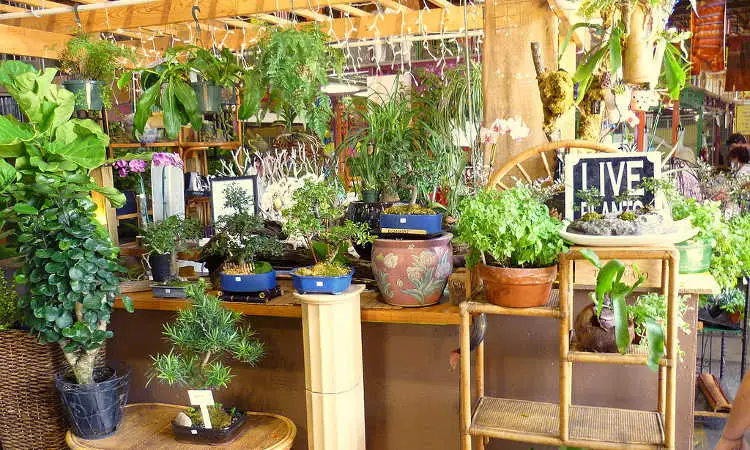Garlic Planting: Key Stages to Monitor Garlic’s Growth Journey
Table of Contents: Garlic Planting
Garlic Planting: Preparing the Soil
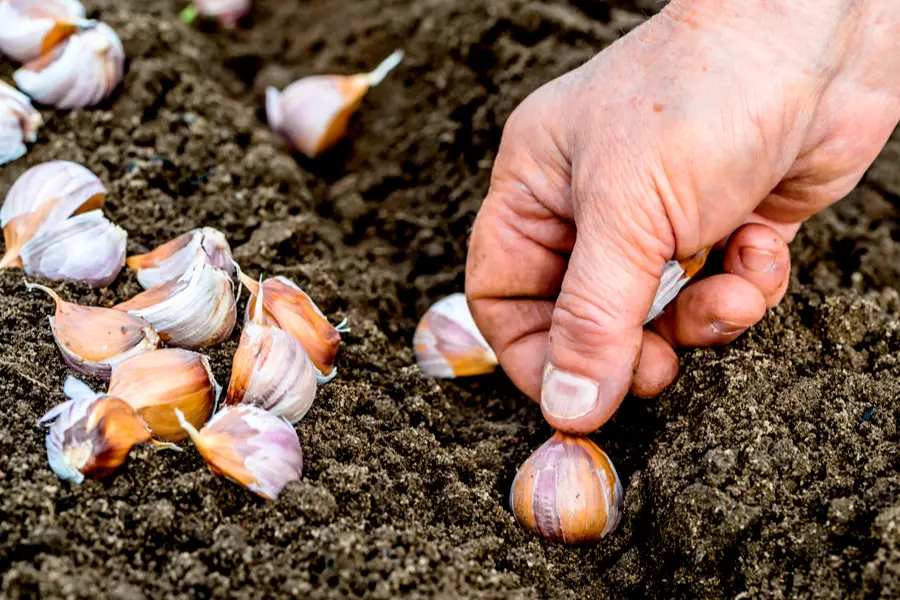
When preparing the soil for planting garlic, it is essential to ensure the right conditions for this crop to thrive. Begin by selecting a well-draining location with full sun exposure. Garlic prefers loose, fertile soil with a pH range between 6.0 and 7.0. You can amend the soil with organic matter like compost or aged manure to improve its texture and nutrient content. Avoid compacted soil, as it can hinder root development and bulb formation. Testing the soil before planting can provide valuable insights into its composition and any necessary adjustments.
Additionally, incorporating a balanced fertilizer with the appropriate NPK (nitrogen, phosphorus, potassium) ratio for garlic cultivation can support healthy growth. It is crucial to avoid excessive nitrogen, as it can promote leafy growth at the expense of bulb development. Instead, focus on providing adequate phosphorus for root establishment and potassium for overall plant vigor. Regular soil maintenance, such as weeding and proper irrigation, can contribute to a favorable growing environment for your Garlic Planting. By preparing the soil thoughtfully, you set the foundation for a successful garlic harvest.
Selecting the Right Garlic Planting Varieties for Your Garden
When selecting the right garlic varieties for your garden, it’s important to consider your specific growing conditions and preferences. There are two main types of Garlic Planting: hardneck and softneck. Hardneck varieties typically have fewer, but larger cloves and are known for their robust flavor, while softneck varieties have more cloves per bulb and tend to store longer. Some popular hardneck varieties include ‘Music,’ ‘Siberian,’ and ‘German Red,’ each offering unique flavors and characteristics.
In addition to choosing between hardneck and softneck varieties, you should also consider whether you want to plant a standard cultivar or a gourmet specialty garlic. Standard cultivars like ‘California Early’ and ‘Inchelium Red’ are reliable choices for beginners, offering good yields and adaptability to various growing conditions. On the other hand, gourmet varieties like ‘Purple Stripe’ and ‘Rocambole’ are favored for their complex flavors and are often sought after by culinary enthusiasts looking to elevate their dishes with nuanced Garlic Planting profiles. By selecting the right garlic varieties tailored to your garden’s needs and your culinary preferences, you can set yourself up for a successful and flavorful harvest.
Garlic Planting: Tips for Success
Garlic is a versatile and beneficial plant to grow in your garden, providing both culinary delights and health benefits. When it comes to planting garlic for success, there are a few key tips to keep in mind. First and foremost, select healthy Garlic Planting cloves from a reputable source to ensure a good start to your crop. Plant the cloves with the pointed end up and the flat end down, ensuring they are spaced adequately to allow room for growth.
It’s essential to plant garlic in well-drained soil that receives plenty of sunlight. Prior to planting, prepare the soil by incorporating organic matter such as compost to provide essential nutrients for the growing garlic. Avoid planting garlic in areas prone to waterlogging, as this can cause the cloves to rot. By following these simple yet crucial tips, you can set your garlic crop up for success and enjoy a bountiful harvest when the time comes.
Watering and Fertilizing Garlic Planting
When it comes to watering and fertilizing garlic plants, it is important to strike a balance to promote optimal growth and bulb development. Garlic plants require consistent moisture levels but are susceptible to rot if the soil becomes waterlogged. To ensure proper hydration, water garlic plants deeply but infrequently, allowing the soil to partially dry out between waterings. This approach helps establish healthy root systems and prevents issues like mold or mildew.
In terms of fertilization, garlic plants benefit from a balanced application of nutrients throughout their growth cycle. Before planting, incorporate organic matter like compost or well-decomposed manure into the soil to provide a nutrient-rich environment. During the growing season, supplement with a balanced fertilizer high in phosphorus to support bulb formation. Avoid excess nitrogen, as it can promote leafy growth at the expense of bulb development. By following a mindful watering schedule and providing adequate nutrition, you can support the growth of robust garlic plants with flavorful, well-formed bulbs.
Managing Pests and Diseases in Garlic Planting
To effectively manage pests and diseases in garlic, it is crucial to implement proactive measures to prevent infestations. Utilizing companion planting techniques can help deter harmful insects naturally. For instance, planting marigolds near garlic can repel nematodes, while intercropping with chives can ward off aphids. Additionally, maintaining proper spacing between garlic plants discourages the spread of diseases by improving air circulation and reducing humidity levels that favor pathogen growth.
Regularly inspecting garlic plants for early signs of pest infestation or disease is paramount in maintaining the health of your crop. Some common pests that target garlic include onion thrips, bulb mites, and nematodes, while diseases like white rot and rust can pose significant threats. Promptly addressing any issues by removing and disposing of infected plants, practicing crop rotation, and utilizing organic pest control methods can help mitigate the spread of pests and diseases in your garlic garden.
Monitoring Garlic Planting Growth: Signs of Healthy Plants
Ensuring the optimal growth of your garlic plants requires attentive monitoring of their development. One of the key signs of healthy garlic plants is the presence of vibrant green foliage. Yellowing or browning leaves may indicate nutrient deficiencies or other underlying issues that could hinder plant growth. It is essential to regularly inspect the leaves for any discoloration or wilting to address potential problems promptly. Additionally, strong and sturdy stems are indicative of healthy garlic plants. Weak or floppy stems may signify improper growing conditions or insufficient support for the plants, which can impede their overall health and productivity. Regularly checking the strength and structure of the stems can help you intervene early to ensure the plants flourish.
Moreover, observing the development of garlic bulbs is crucial for gauging the health and maturity of your plants. Healthy garlic bulbs typically show uniform growth and firm texture, indicating a successful growing process. Irregular bulb sizes or soft and mushy textures may suggest issues such as inadequate watering, poor soil conditions, or pest infestations. Monitoring the size, shape, and firmness of the bulbs as they mature can provide valuable insights into the overall well-being of your garlic plants. By closely following these visual cues and making necessary adjustments to your growing practices, you can promote the health and vitality of your garlic crop for a bountiful harvest.
Pruning Garlic Planting Scopes for Better Bulb Development
Pruning garlic scapes is a key practice for ensuring optimal bulb development in your garlic plants. By removing the scapes, which are the curly stems that emerge from the tops of Garlic Planting, you redirect the plant’s energy from producing seeds towards growing larger and healthier bulbs. This process is essential for maximizing the size and flavor of your garlic harvest.
When pruning garlic scapes, it is recommended to do so once they have formed a couple of loops but before they straighten out fully. By cutting the scapes at this stage, you not only encourage the plant to focus its resources on bulb formation but also prevent the scapes from becoming tough and fibrous, making them challenging to use in culinary dishes. Additionally, removing the scapes can help reduce the risk of certain diseases affecting the garlic plants, promoting overall plant health and productivity.
Understanding the Different Growth Stages of Garlic Planting
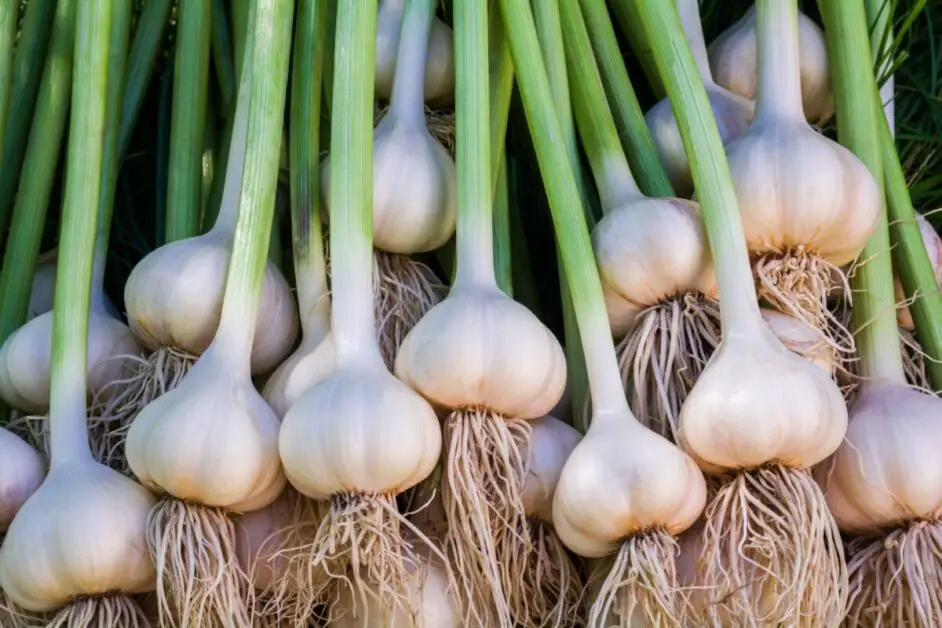
Garlic, a staple in many cuisines worldwide, goes through several distinct growth stages as it develops from a clove to a mature bulb. The first stage is germination, where the clove planted in the soil begins to send out roots and shoots. This initial phase is crucial for the establishment of the Garlic Planting plant’s root system, which will support its growth and development throughout the season.
As the garlic plant continues to grow, it enters the vegetative stage, characterized by the rapid growth of leaves and the development of a strong, healthy plant structure. During this phase, the plant focuses on photosynthesis, utilizing sunlight to produce energy and nutrients for growth. The vegetative stage is essential for building the necessary reserves that will fuel bulb formation later in the garlic’s life cycle. Understanding these growth stages is vital for ensuring the successful cultivation of garlic and optimizing bulb development for a bountiful harvest.
Garlic Planting: When and How to Harvest
When it comes to harvesting garlic, timing is crucial to ensure the best flavor and storage quality of your bulbs. Garlic is ready for harvesting when the lower leaves have turned yellow and dried out, typically in late spring or early summer depending on when you planted it. Keep an eye on the tops of the plants as well – when they start to lean over and dry out, it’s a good indication that the bulbs are mature and ready to be dug up.
To harvest your garlic, gently loosen the soil around the bulbs with a fork or shovel, being careful not to damage the bulbs in the process. Once the bulbs are exposed, carefully lift them out of the ground and shake off any excess soil. It’s important to handle the bulbs gently to prevent bruising or damage, which can affect their storage life. After harvesting, it’s best to let the garlic bulbs cure in a warm, dry, well-ventilated area for a few weeks to allow the outer layers to dry and the flavors to intensify.
Curing Garlic Planting: Ensuring Proper Storage
After harvesting your garlic bulbs, proper curing is essential to ensure their long-term storage. Curing garlic involves allowing the bulbs to dry in a warm and well-ventilated area for a few weeks. This process helps to enhance the flavor and shelf life of the garlic by allowing excess moisture to evaporate and the skins to tighten around the cloves.
Once your garlic bulbs have been properly cured, it’s important to store them in a cool, dry, and dark place to prevent sprouting and molding. Ideal storage conditions for Garlic Planting include temperatures between 60-65°F (15-18°C) with moderate humidity levels. Additionally, storing garlic away from sources of light will help maintain its flavor and quality for several months, allowing you to enjoy your homegrown garlic well beyond the harvest season.
Using Garlic Scapes in Cooking
Garlic scapes, the curly, vibrant green shoots that emerge from garlic plants, are a versatile and flavorful ingredient that can enhance a variety of dishes. These scapes offer a milder taste compared to garlic cloves, making them perfect for those who prefer a more subtle garlic flavor in their meals. When cooking with garlic scapes, consider using them in stir-fries, salads, pesto, soups, or even as a garnish to add a pop of color and taste to your culinary creations.
One popular way to enjoy garlic scapes is by incorporating them into homemade pesto. Simply substitute traditional basil with chopped garlic scapes in your favorite pesto recipe for a unique twist on this classic sauce. The scapes add a fresh garlic flavor with a hint of sweetness, making it a delightful addition to pasta, sandwiches, or as a dip for veggies. Experiment with different herbs, nuts, and cheeses to create your own signature garlic scape pesto that will surely impress your taste buds and guests at your next gathering.
Propagating Garlic: Saving Bulbs for Next Year
When it comes to propagating garlic and saving bulbs for the next year, there are a few essential steps to follow to ensure a successful harvest. First, choose healthy bulbs from your current crop, making sure to select those that are free from disease or damage. These bulbs will serve as the foundation for your next garlic planting.
After harvesting your garlic bulbs, it’s crucial to cure them properly before storing for the next growing season. This curing process helps the bulbs develop a protective skin, allowing them to store well and remain viable for planting. Hang the bulbs in a warm, dry, and well-ventilated area for a few weeks until the outer skins are papery and the cloves firm up. Once properly cured, store the bulbs in a cool, dark place until you’re ready to plant them again in the next growing season.
Common Mistakes to Avoid in Growing Garlic
When it comes to growing garlic, there are some common mistakes that can hinder a successful harvest. One of the key mistakes to avoid is planting garlic in compacted or waterlogged soil. Garlic bulbs need well-draining soil to thrive, as waterlogged conditions can lead to root rot and poor bulb development. It is essential to ensure that the soil is loose and friable before planting your garlic cloves to promote healthy growth.
Another mistake to steer clear of is planting garlic cloves upside down. When planting garlic, it’s crucial to position the cloves with the pointed end facing up and the flat end down. Planting cloves upside down can impede the growth of the garlic plant and result in misshapen or stunted bulbs. By taking the time to plant your garlic cloves correctly, you can set the stage for a successful growing season and a bountiful harvest of flavorful garlic bulbs.
Garlic Companion Planting: Best and Worst Pairings
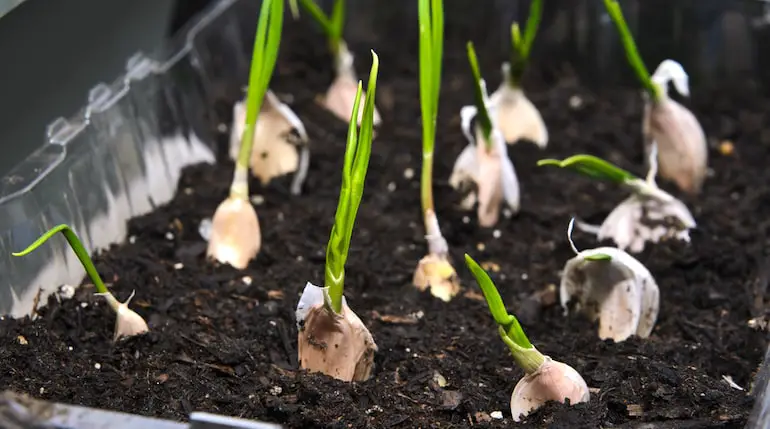
When it comes to companion planting with garlic, choosing the right pairings can significantly benefit your garden’s overall health and productivity. Garlic is known for its natural pest-repelling properties, making it an excellent companion for many vegetables and herbs. Some of the best pairings for garlic include tomatoes, peppers, and lettuce. These plants not only benefit from garlic’s pest-deterring qualities but also complement each other in terms of nutrients and growth requirements.
On the other hand, there are certain plants that should be kept away from garlic in companion planting. Avoid planting garlic near beans and peas, as they can inhibit each other’s growth due to conflicting nutrient needs. Additionally, keeping garlic away from sage and parsley is advisable, as these herbs may negatively impact the flavor and growth of garlic. By strategically planning your garden layout and considering the best and worst pairings for garlic companion planting, you can optimize plant health and yield in your growing space.
Here’s a simple table outlining the basic steps for planting garlic:
| Step | Description |
|---|---|
| Selecting | Choose healthy, disease-free garlic bulbs for planting. Select varieties suitable for your climate. |
| Preparing | Prepare the planting bed by loosening the soil to a depth of about 8 inches (20 cm). Remove any weeds and add organic matter such as compost or well-rotted manure to improve soil structure and fertility. |
| Separating | Carefully separate individual cloves from the garlic bulb, ensuring each clove is intact with its papery skin intact. Avoid damaging the cloves during separation. |
| Planting | Plant cloves with the pointed end facing up and the flat end down. Space cloves about 6-8 inches (15-20 cm) apart in rows spaced 12-18 inches (30-45 cm) apart. Plant cloves 1-2 inches (2.5-5 cm) deep, pressing them gently into the soil. |
| Mulching | Apply a layer of mulch such as straw or shredded leaves to the planting bed to help retain moisture, suppress weeds, and moderate soil temperature. |
| Watering | Water the garlic thoroughly after planting to settle the soil around the cloves. Keep the soil consistently moist but not waterlogged throughout the growing season. |
| Fertilizing | Apply a balanced fertilizer or compost tea to the garlic plants once or twice during the growing season, following package instructions for dosage. Avoid high-nitrogen fertilizers, which can encourage excessive foliage growth at the expense of bulb development. |
| Maintenance | Remove any weeds that emerge around the garlic plants to reduce competition for nutrients and water. |
| Harvesting | Harvest garlic when the lower leaves turn yellow and begin to dry out, typically in mid to late summer. Carefully dig up the bulbs, avoiding damage to the outer skin, and allow them to cure in a warm, dry, well-ventilated area for 2-3 weeks. |
This table provides a basic guideline for planting garlic, but specific practices may vary depending on factors such as climate, soil type, and garlic variety. Adjustments may be necessary based on local conditions and experience.
Celebrating the Harvest: Recipes and Ideas for Using Fresh Garlic Planting
Garlic is not only a flavorful addition to a wide array of dishes but also offers numerous health benefits. Celebrate your garlic harvest by exploring creative ways to incorporate this versatile ingredient into your cooking. From savory soups and stews to aromatic sauces and marinades, fresh garlic can elevate the flavor profile of your favorite recipes. Consider trying your hand at making homemade garlic-infused oils or vinegars to add a gourmet touch to your culinary creations.
Garlic also shines in vegetarian and vegan dishes, providing a robust umami flavor that can enhance plant-based meals. Roasted garlic can be spread on crusty bread or blended into creamy dips for a delicious appetizer. Additionally, incorporating garlic scapes into salads, stir-fries, or pesto sauces can introduce a subtle garlicky note and a unique texture to your dishes. Experiment with different cooking techniques to unlock the full potential of your garlic harvest and savor the rich flavors it imparts to your meals.
Can you replant garlic cloves after harvesting?
Yes, you can save some of the largest, healthiest bulbs from your harvest to replant for the next growing season.
What are some creative ways to use Garlic Planting Scopes in cooking?
Garlic scapes can be used in stir-fries, pesto, salads, soups, and even grilled as a side dish. Get creative and experiment with different recipes!
Which plants are good companions for growing garlic?
Some good companion plants for garlic include tomatoes, peppers, onions, and lettuce. Avoid planting garlic near beans, peas, or sage as they may inhibit each other’s growth.
How do you know when garlic is ready to be harvested?
Garlic is ready to be harvested when the lower leaves start to turn brown and dry out. Dig up a bulb to check for plump cloves inside before harvesting the rest.
What is the best way to store cured garlic bulbs?
Cured garlic bulbs should be stored in a cool, dry place with good air circulation. Avoid storing them in the refrigerator as this can cause them to sprout prematurely.


